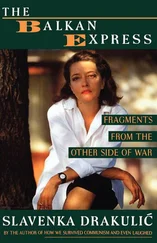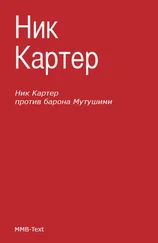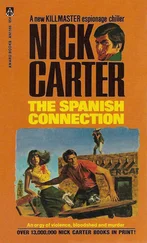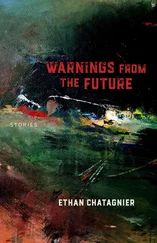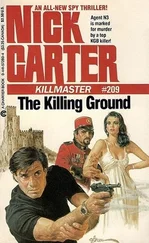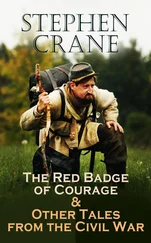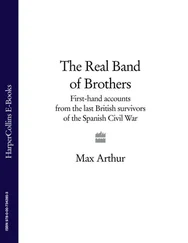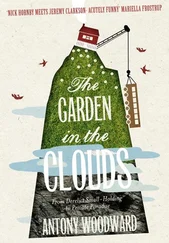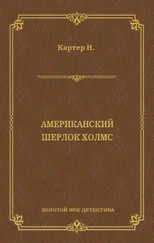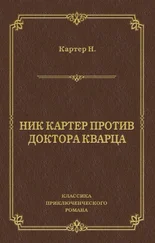“I was there, as I have told you,” he said, his voice sounding deep and hollow, his eyes starting to mist. “I remember so little, no more than what I told you. I saw the cave. I saw the seashell necklace that I had made for my daughter. It was on the body of a naked corpse. That is how I was able to tell that it was her.”
His voice cracked then and I wanted him to stop that particular line of thought. It wasn’t necessary to recall details of the inside of the cave, of the grisly scene there. I wanted him to recall details of the outside, of how to get there. But I knew enough about idea association to let him ramble in his own way, as time slipped past, minute by minute.
But he was finished with his grim recollections. He looked at me blankly, puzzled over what I was seeking. I didn’t want to lead him. It was important that his mind be free of prejudice when he saw what I had to show him.
“Do you recall any details of when you followed Ancio and his friends into the mountains?” I asked.
He spent some time thinking. Precious time. My anxiety grew.
“I was under great stress at the time,” he said. “I had anticipated that my daughter was gone, but I had no idea...” He stopped, swept the circle of interested faces with deeply sad eyes, and said, “it was thirty years ago. I recall many scenes quite well. They are emblazoned on my soul. However...”
That was the worst of the bad news. He had no idea whatsoever of where the cave entrance was. I wouldn’t be able to jog his memory with further questions, and I was afraid of even more bad news when I sprang my one and only possibility. But there was no more time to waste. I turned to Antonio.
“Would you get the map and show it to Pico.”
“The map?” Antonio asked, puzzled. “Senor Carter, it is in Indian hieroglyphics and, if the Indians can’t read the symbols, how can you expect...”
“Pico was a professor of anthropology at Nicarxa University,” I said, looking at Pico to confirm that by memory of what he had told me that day at his hermitage was correct. “He was head of the department of Indian Culture when he became involved in a revolutionary activity that changed his life forever. Am I correct, Pico, in assuming that, as head of the department of Indian Culture, you would have been required to learn the various hieroglyphics used by all the tribes in this area?”
Pico nodded. “You have a map? What kind of map?”
I asked Chief Botussin to explain about the map. It was a mistake. The old chief wound himself up a tangled web of words that seemed to have no ending. It took five precious minutes for him to reach his point: that the map showed Ancio how to find the cave entrance and that his warriors took the map from Ancio and that it had been kept in a secret hiding place ever since and that he would be sorely tried if it fell into evil hands, etcetera.
“May I see it?” Pico asked.
Antonio had the map in a leather pouch strapped to the small of his back. He quickly undid the pouch and handed the fragile parchment over to Pico. The old man studied it for more time than I would have liked him to spend on it. The sun got hotter, the flies meaner and the day much, much shorter. Pico finally looked up and saw the worried looks on all our faces. He grinned at me.
“Don’t worry so much about the time, Senor Carter,” he said. “I have good news about that. The signal will not be given before sundown. At this time of year, sundown will come shortly after 8:30. You have ample time.”
I looked at my watch, a digital creation that was a gift from David Hawk. It was full of lifetime batteries. And the numbers read 12:22. I breathed a small sigh of relief. I had estimated that we had perhaps six or seven hours to stop Don Carlos from sending the signal. We actually had more than eight hours. Yet, it was no great solace learning that piece of good news — we could use, I was sure, more than eight days and still be cutting it close.
“The big concern is the map,” I said, “and whether you can read the hieroglyphics. Can you?”
“Oh yes. In my time on the mountainside, I had many hours to continue my studies. And I took along textbooks from anthropologists and sociologists, who have recorded the hieroglyphics of all the ancient tribes in Central and South America. I knew them by heart when I was actively teaching, but I could have forgotten them in thirty years, as I forgot the trail to the cave. Fortunately, I loved my work as a professor of anthropology, so I kept up. However...”
We all sucked in breath, anticipating another round of bad news. We got it.
“The critical area of the map is far too faint to be seen, even by the best of eyes. The map shows a trail leading from an ancient encampment over there...” he raised a long arm and pointed off to the west — “to a point near the mouths of seven valleys.” He pointed to the northeast. “But that section concerning the hollows and the cave itself are so faded that — I’m sorry, but it’s hopeless.”
Bad news — in spades. He could read the map, but seeing it hadn’t lifted the veil that covered his memory, hadn’t triggered any sharp or even faint details of the route to the cave entrance. And a vital part of the map was too faded to be read.
“What I don’t understand,” I said, “is how Ancio — or Don Carlos — was able to use this map to find the cave entrance.”
“It was easy for him,” Pico said. “As Chief Botussin said, he was coached by the old man who entrusted the map to him. And there’s another thing. This fading is a recent thing, brought on by Ancio’s careless handling of the map. Then, again, the man had all the time in the world to find that cave, while our time, you must admit, is sorely limited.”
There was a deep silence in the twin circles in the hot sun and the square of the Ninca village. Old Pico looked from face to face, then returned to a study of the map. More minutes passed. My watch read out at 12:36. Less than eight hours to go. If we had the answer this very minute, I calculated, it would take us two hours to get to the cave entrance, depending on which hollow it was in. That would give us six hours to make what had been calculated as a four-hour climb. We had, then, two hours to spare, two hours in which to learn the mystery of the map.
It was obvious to all of us that we wouldn’t be able to make out that damned map in two hours, two days, or even two years. Perhaps even two lifetimes. Fat old Botussin began to shift nervously on the stool his buttocks had swallowed up on the ground. He was anxious to end this fruitless confab and set up his defenses against Don Carlos Italla’s elite corps. We could expect them just minutes after the 8:30 signal was given. I knew the old chief was considering moving the Indian village back to the ancient site shown on the map. That would give the Nincas more time, but we all knew that the elite corps would soon find that location. In a matter of days, perhaps even hours.
By tomorrow at this time, there would be no more Ninca Indians in the country of Nicarxa. And, unless another miracle occurred, no more Nick Carter. After my killing of Col. Ramon Vasco, I could count on the fact that my name was high on the list of kills, probably higher than the names of the Nincas.
Pico stirred on the ground, held the map up toward the sun to look at it from a new angle. We waited for Botussin to call an end to the meeting, to start preparing his final defenses. The chief opened his mouth to speak, but Pico held up his enormous hand for silence. He had a new thought. Good news or bad news?
“High above my plateau,” he said, more to himself than to the rest of us, “there is a certain herb I found that I boiled into a clear liquid. I coated the print on some of my books, print that was growing faint. Or perhaps it was only my eyes going faint. In any event, the print grew darker, more distinct. I could read it more easily.”
Читать дальше

